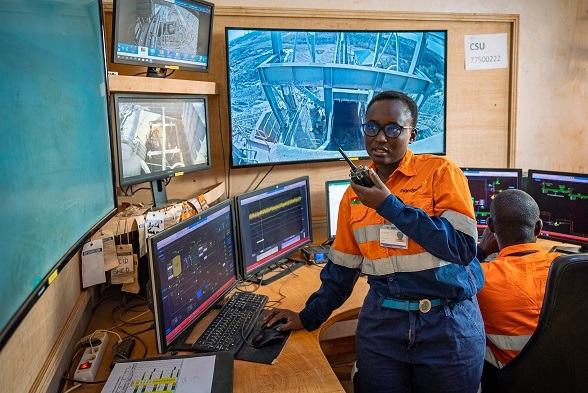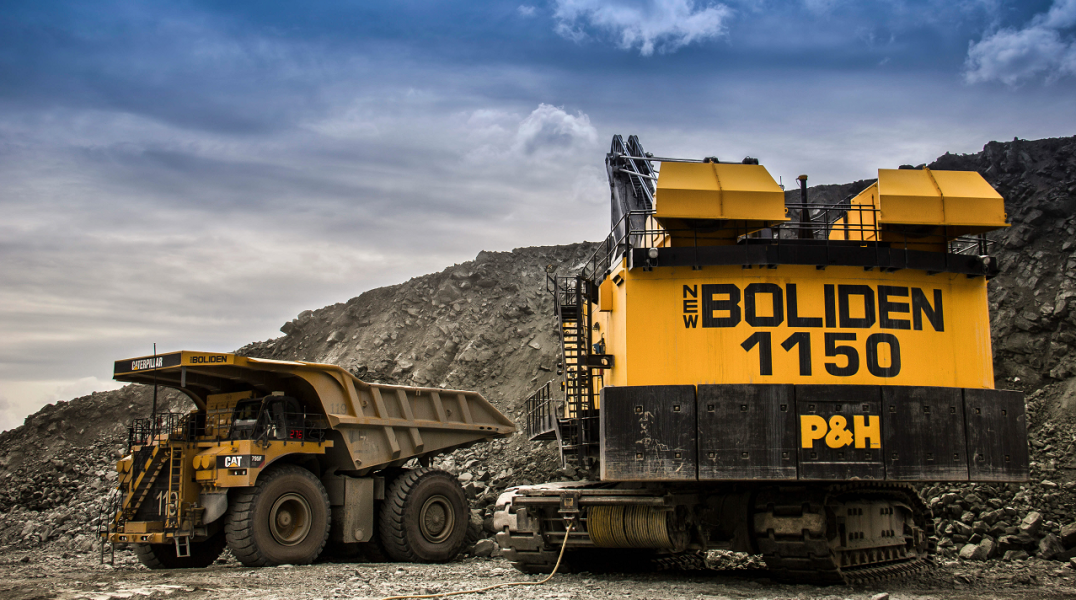Back in the 20th century, when the Manitoba Power Commission and Manitoba Hydro Electric Board united to form Manitoba Hydro, pushing out into far reaches of the Canadian province was no easy business.
Now, says public affairs manager Scott Powell, the world has opened up somewhat but the ingenuity, expertise and sheer determination required to see the corporation’s current projects through to fruition still necessitates an equal measure of drive.
“Like Quebec, parts of northern Manitoba are extremely remote and we face a number of huge challenges even today,” he points out. “There are the extreme climates: the very hot summers and the long, cold winters, and then the access to the sites in order to be able to break ground.
“When we began working on our first major northern projects back in the 1950s, there were no roads and there was very little infrastructure. But, even today, we are working in locations that are really quite unique – and we still require critical infrastructure for our current projects, such as Keeyask and Bipole III.”
“Unique” is a term that is frequently applied to Manitoba Hydro, one of the largest and longest-standing energy utilities in Canada. The history of the electrical industry in the region goes back to the late 19th century, with the formation of the Winnipeg Electric Railway Company and the Manitoba Electric and Gas Light Company. Over the decades these and other companies evolved until Manitoba Hydro became the sole supplier of electricity.
Today it remains a crown corporation, a publicly owned utility that is responsible to the provincial government, but operates as a separate entity. It is one of the largest energy utilities in Canada, with capital assets-in-service of more than $17 billion at original cost.
Vertically integrated, it is involved in the planning, design, construction, operation and maintenance of all elements of electricity and natural gas infrastructure, serving almost 562,000 electricity customers and nearly 275,000 natural gas customers in Manitoba.
“What is unique for us as a utility is that over 95 per cent of our electrical energy comes from renewables,” Mr Powell continues. “We do have some natural gas generation as a back-up and purchase some wind power from independently-owned wind farms, but nearly all our electricity comes from reliable, self-renewing water power.”
Manitoba Hydro’s energy is generated at 15 hydroelectric stations, most of which are on the Winnipeg, Saskatchewan and Nelson rivers. It is among the lowest cost providers of domestic electricity rates in Canada and exports surplus electricity to utilities through its participation in three wholesale markets in Canada and US.
It is also the major distributor of natural gas in the province, taking it out to nearly 100 communities in the province.
Among the corporation’s current pioneering projects are Keeyask and Bipole III.
The Keeyask Project will see the creation of Manitoba’s fourth largest generating station. It will be situated at Gull Rapids, some 725 km north-east of Winnipeg, on the lower Nelson River, and will be a source of renewable energy, providing approximately 695 megawatts of capacity and producing an average of 4,400 gigawatt hours of electricity each year, explains project manager Dave Bowen.
“One of the things we are particularly proud of is that Keeyask is a collaborative effort between Manitoba Hydro and four Manitoba First Nations: Tataskweyak Cree Nation, War Lake First Nation, York Factory First Nation and Fox Lake Cree Nation, working together as the Keeyask Hydropower Limited Partnership (KHLP),” he says. “Manitoba Hydro is responsible for project management during construction, and will own at least 75 per cent of the equity of the partnership. The four First Nations, known collectively as the Keeyask Cree Nations, together have the right to own up to 25 per cent of the partnership.”
The $6.5 billion Keeyask Project has three major components: the Keeyask Infrastructure Project, Keeyask Transmission Project, and the Keeyask Generation Project. Construction on the infrastructure project began in early 2012 and was substantially completed in July 2014. Work began on the generation project following that, and the first generator is expected to come online in 2019, with all units on-line by 2020.
“The infrastructure project saw work on access road construction and camp development: the site is remote and we basically had to construct a town. Along with the weather, one of our greatest challenges is attracting and retaining the labour we need to build Keeyask – our on-site workforce will peak at approximately 2,000 people. We are competing against other remote Canadian projects and our best in class camp provides workers a safe and comfortable home away from home,” Mr Bowen stresses.
“We also have to ensure we maintain our focus on minimising environmental impacts throughout this project. It is about working in ways that minimise any environmental impact at every stage.”
The Bipole III Project faces many of the same challenges as Keeyask – rugged terrain, severe climate, attracting and retaining skilled workers, as well as environmental considerations. And here again, the creation of high quality staff facilities is a priority.
Bipole III, explains deputy project manager Alastair Fogg, is a $4.6 billion transmission reliability project with a projected in-service date of 2018.
“What is unique again about Manitoba Hydro is that 75 per cent of the electricity used in Manitoba is generated at our northern generating stations. This energy travels south, through the Interlake region, down two high-voltage direct current (HVDC) transmission lines known as Bipole I and II, which run side-by-side,” he explains. “The idea behind Bipole III was to provide an alternative path.”
Being in such close proximity to each other, he continues, the Bipole I and II lines are susceptible to being impacted by a single weather incident, such as a major ice storm or tornado, or forest fire event, causing major power outages. They also rely on a single converter station in the south to convert the direct current power back into alternating current for distribution into the provincial power grid.
The Bipole III Reliability Project includes two new converter stations. One of these, the Riel Converter Station, would be in the south to provide another major point of power injection into the transmission and distribution system. The other would be in northern Manitoba, northeast of Gillam (the Keewatinohk Converter Station).
As with Keeyask, Mr Fogg insists, the traditional knowledge of the people living in the area was incorporated into project planning.
“Aboriginal Traditional Knowledge (ATK) is valued for the contribution it made to providing complementary understanding about the environment and people” says Mr Fogg. “We recognise the value of ATK and that this knowledge was incorporated during the planning and environmental assessment process”.
Angie Adams, vice-president of major capital projects at the corporation, stresses Manitoba Hydro’s continued success as a whole is linked to the economic and social sustainability of the communities in which it operates. The aim with both Keeyask and Bipole III is to provide early business opportunities for northern Aboriginal people, and other northern and Manitoba workers, and that – as the projects progress – there will be continued training and long-term prospects for career development.
“Our corporate social responsibility philosophy is to ensure best practices and to work closely with all communities where we operate,” she says. “And moving forward our aim is to ensure that we continue to conduct our business in this way.
“I do believe that we have built a strong relationship between Manitoba Hydro and its partners, and this will serve to put everyone involved in these projects in a good position for the future.”
As Manitoba Hydro heads towards fruition on its current projects, Mr Powell concludes, there are also other lessons to be learned from Keeyask and Bipole III. Not only is environmental and social best practice at the corporation evolving but the process of planning and constructing the projects is resulting in invaluable knowledge, know-how and experience at every level within the utility.
“A lot of the other infrastructure Manitoba Hydro relies on was installed after the second world war, when the first major rural electrification programmes took place,” he points out. “Much of this will need to be renewed over the next 10 to 20 years and we will also have to add new capacity to meet the growing needs of our customers.
“The experience we gain on projects such as Keeyask and Bipole III will serve us well in the long-term as we move full speed into renewing, rebuilding and expanding our existing assets as they come to the end of their service lives. Being able to continue to provide our customers with reliable service at affordable rates is always our goal.”
Source: https://evolutionbusinessmedia.com/manitoba-hydro-keeyask-a-unique-utili...














